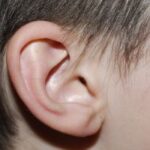The head unit of a car audio system is where the CD player, cassette player, and radio are. Because this is where your sound quality starts, it’s important to choose a model that sounds good to you. Where car audio is concerned, differences in price usually do indicate differences in quality. Skimping here can lower the overall quality of sound you get. Keep in mind, though, that while power and sound quality specifications are worth considering, these specifications aren’t enough to choose a head unit by. They’re usually measured by computer and sometimes describe differences so minute the human ear can’t even hear them.
Size
The physical size of car audio head units is measured in DIN, but these sizes can differ by country and/or car make. The standards are single-DIN (standard DIN), DIN-and-a-half, and double-DIN. You’ll most likely be able to find a new head unit in the same size as the one you’re planning to replace, but you aren’t necessarily stuck with head units in that size only. If you end up choosing one in a different size, you can use an adapter units or “fit kit” to help fit the new unit into the existing opening.
Power output
Most head units have come with amplifiers built in. Unfortunately, the sound quality these provide isn’t usually very good. In fact, some higher-end models don’t even include amplifiers with the expectation that the buyer would want to add good quality external amplifiers anyway. On typical head unit amplifiers, you’ll find a power output rating somewhere between 30 and 60 watts per channel. The problem with using only this rating is that it almost always describes peak performance under ideal conditions you may never even reach. A better way to ensure you’re getting a high quality unit is to check the RMS rating, which is the unit’s continuous power rating (an indication of how long it can run without creating distortion). Make sure the RMS is equal to or higher than the maximum wattage.
RCA pre-outs
If you’re not going to add an external amplifier, you don’t need RCA pre-outs. Even so, most quality head units come equipped with them anyway. You may not think you’ll use them, but it’s good to have them anyway in case you want to upgrade or build on your car audio system in the future. Given the low quality of most head unit amplifiers, you’ll probably want to add an external amplifier in the future. While some head units have only two sets of pre-outs, most good quality head units have three sets. Also, consider the voltage of the RCA pre-outs. Not only does voltage affect how loud the amplifier is, but also a higher voltage means less noise interference. In general, if you’re going to use an external amplifier, go for the highest voltage you can get.
The equalizer (EQ)
An equalizer lets you adjust the sound to your preferences. The most basic equalizers have only two bands (bass and treble), but many also include a band for mids. Higher-end models may have five or seven band equalizers that act more like expanded tone control. If you’re really obsessed with getting perfect sound, you can get an external unit, some of which have 30 bands.
Digital time correction
Audio tends to sound more natural if you’re sitting right between two speakers. Of course, in a car this is difficult if not impossible. Usually, the passenger side speaker is farther from your ear than the driver side speaker, so one ear will receive sound before the other. Digital time correction, however, allows you to correct for this. By delaying the sound output from a given speaker, it can trick your ears into thinking you’re centered between the speakers. You can adjust the length of delay from either speaker to suit your hearing, depending on how far you are from each speaker. This feature can also correct for wind noise when you drive with one window down.
Other features
While price is quite often an indication of quality, it’s not always an indication of how many features you’ll get. Sometimes the most expensive head units lack simple features that cheaper head units include. Which features you’ll need is mostly a matter of personal choice. Will you want to connect your iPod or play MP3s? Will you want satellite radio? What about the layout of the head unit display? Make sure the display is something you’ll be able to work with without having to take your eyes off the road.
Making the final choice
When you have a good idea of what you’re looking for, you can start narrowing down your choices by brand. Among the most popular brands for good sound quality and reliability are Alpine, Pioneer, Eclipse, and McIntosh. Sony and Kenwood, while low cost, also have a reputation for breaking down.
Most importantly, listen to several units before you buy. You’re the only one who has to like it, so the ratings don’t matter much if the unit doesn’t sound good to you. Keep in mind, though, that if the unit isn’t installed correctly, no matter how good it sounded in the store, it can still sound bad in the car. Take some time to consider what features you want in your car audio system’s head unit and your investment by giving you exactly the kind of sound you want.





